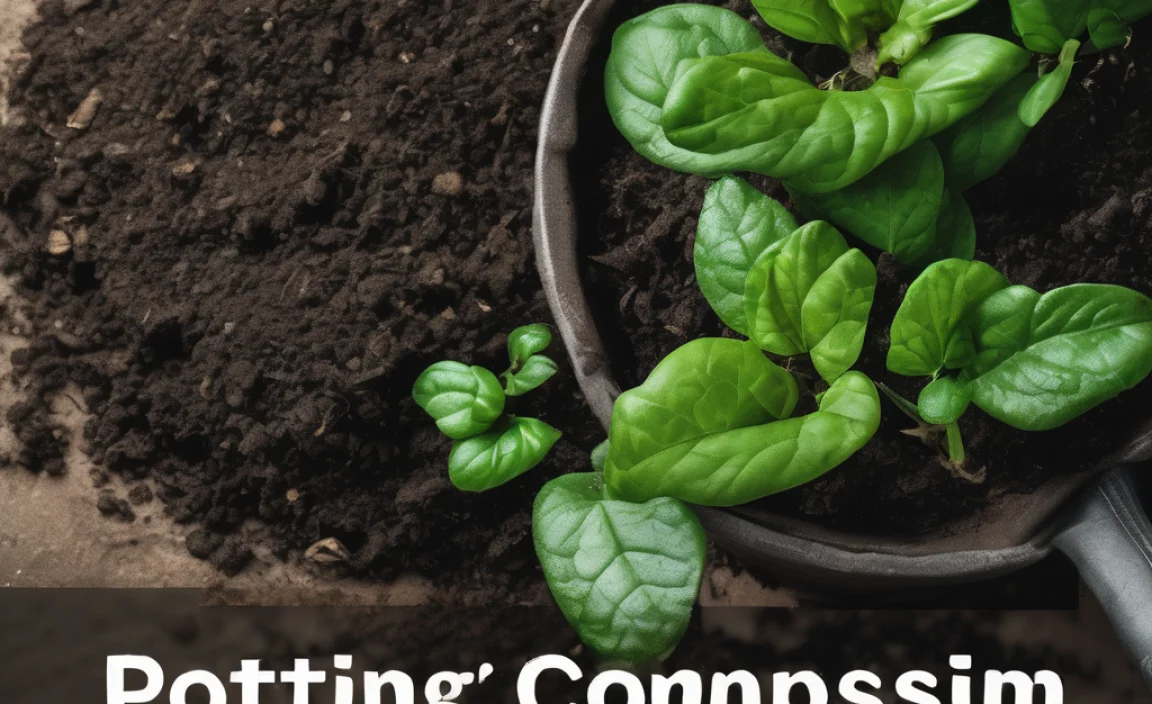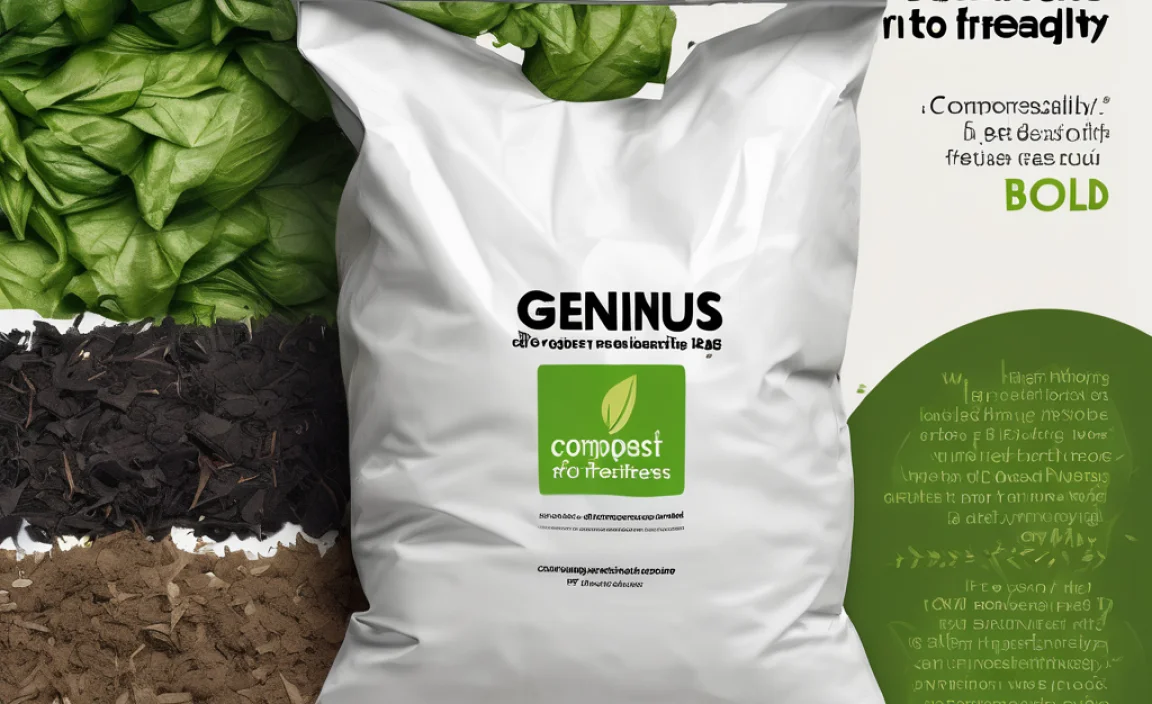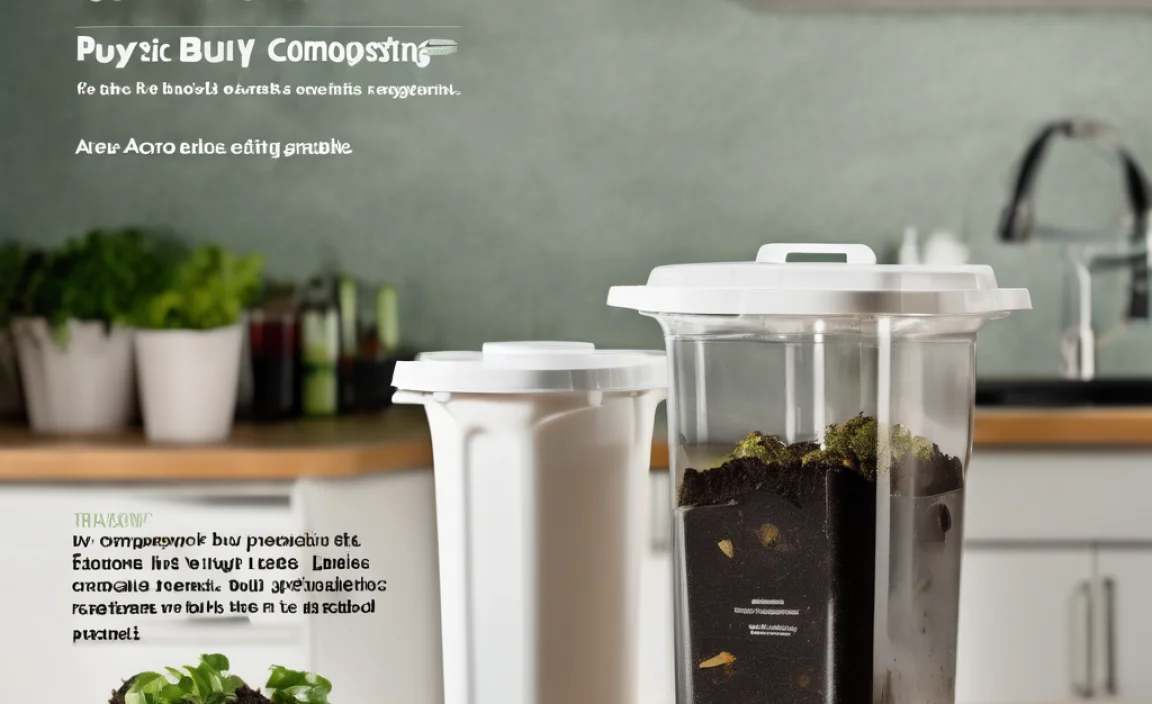Hey there, neighbor! Ever look at your garden or farm and wish for a little extra oomph? Maybe your plants seem a bit… tired. You’ve heard about compost, but what about compost tea? It sounds fancy, but it’s actually a super simple way to give your soil and plants a big boost, especially if you’ve got a bit of space around your home. Think of it like making a super-powered healthy drink for your garden. We’ll walk through exactly how to make it work for you, right here, step-by-step. Let’s get those plants thriving!
What Exactly Is Compost Tea? (Hint: It’s Not for Drinking!)
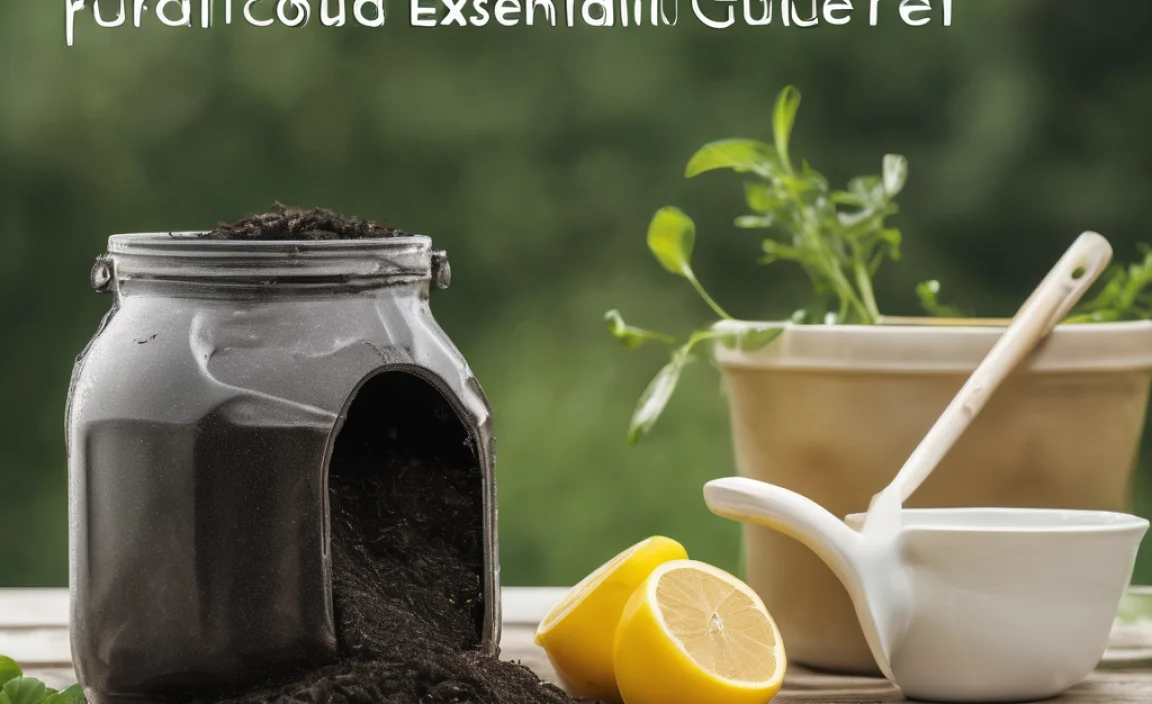
Alright, let’s clear the air right away: compost tea is not for your morning cup. It’s a liquid fertilizer made by steeping compost in water. This process extracts beneficial microbes and nutrients from the compost, creating a potent, brewable elixir for your soil and plants. Instead of just digging compost into the ground, compost tea lets you deliver those garden-loving goodies directly to the roots and leaves. It’s like giving your plants a healthy smoothie that’s packed with all the good stuff they need to grow strong and fight off sickness.
Why is this so great for folks in more rural settings? Well, if you have a bit more space, you likely have more garden beds, lawn areas, or even larger crops to tend to. Applying compost tea can be a more efficient way to nourish these larger areas. Plus, if you’re already into composting (or thinking about it!), making compost tea is a natural next step. It’s a fantastic way to use your compost more effectively and get more bang for your buck, or in this case, for your compost pile!
Choosing Your Compost: The Foundation of Great Tea
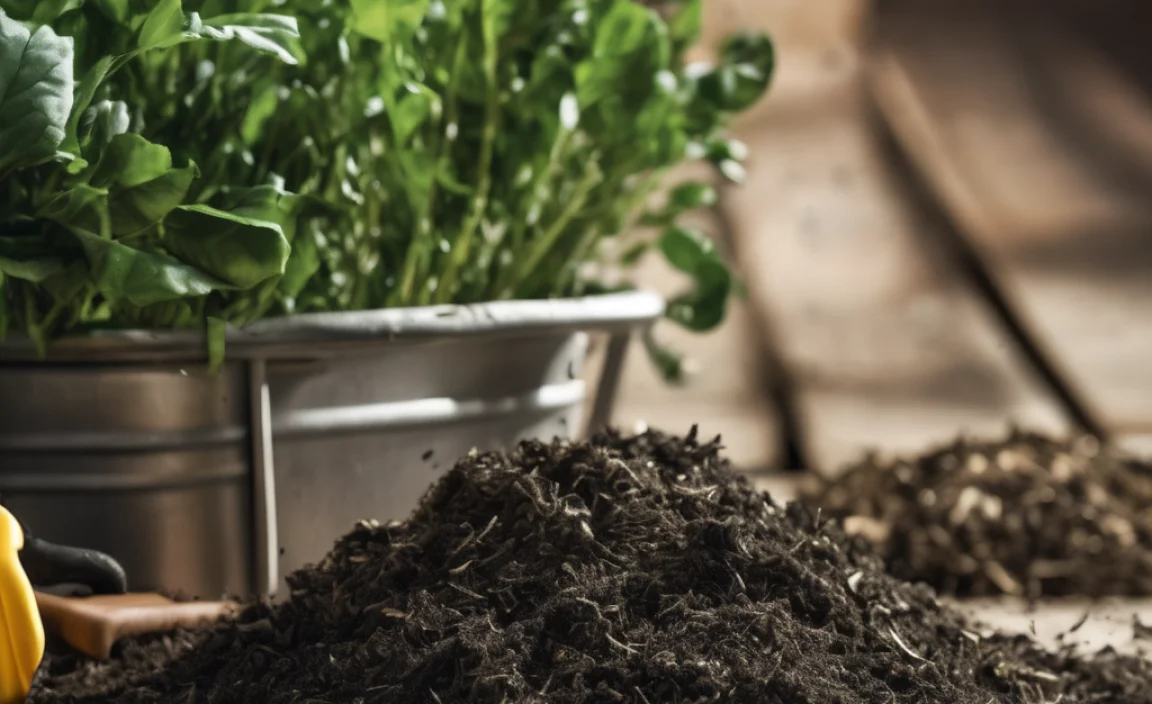
The magic of compost tea starts with the compost itself. You can’t just use any old pile of yard waste and expect amazing results. For the best compost tea, we’re looking for compost that’s mature, actively breaking down, and teeming with life. This means using compost that has finished cooking – it shouldn’t smell sour or be hot to the touch anymore. It should look and smell like rich, earthy soil.
What kind of materials make for good compost tea ingredients? Aim for a good mix of “greens” (nitrogen-rich materials like kitchen scraps, grass clippings) and “browns” (carbon-rich materials like dried leaves, straw, shredded paper). A well-balanced compost, often called “worm castings” when made with earthworms, is ideal. Worm castings are nutritional powerhouses and are practically ready to go for making super-charged compost tea.
If you’re buying compost, look for certified organic compost or high-quality worm castings from a reputable source. Avoid compost that contains synthetic fertilizers or pesticides, as you don’t want to douse your plants with those! The goal is to feed your soil with beneficial life, not chemicals.
The ‘Why’: Benefits of Compost Tea
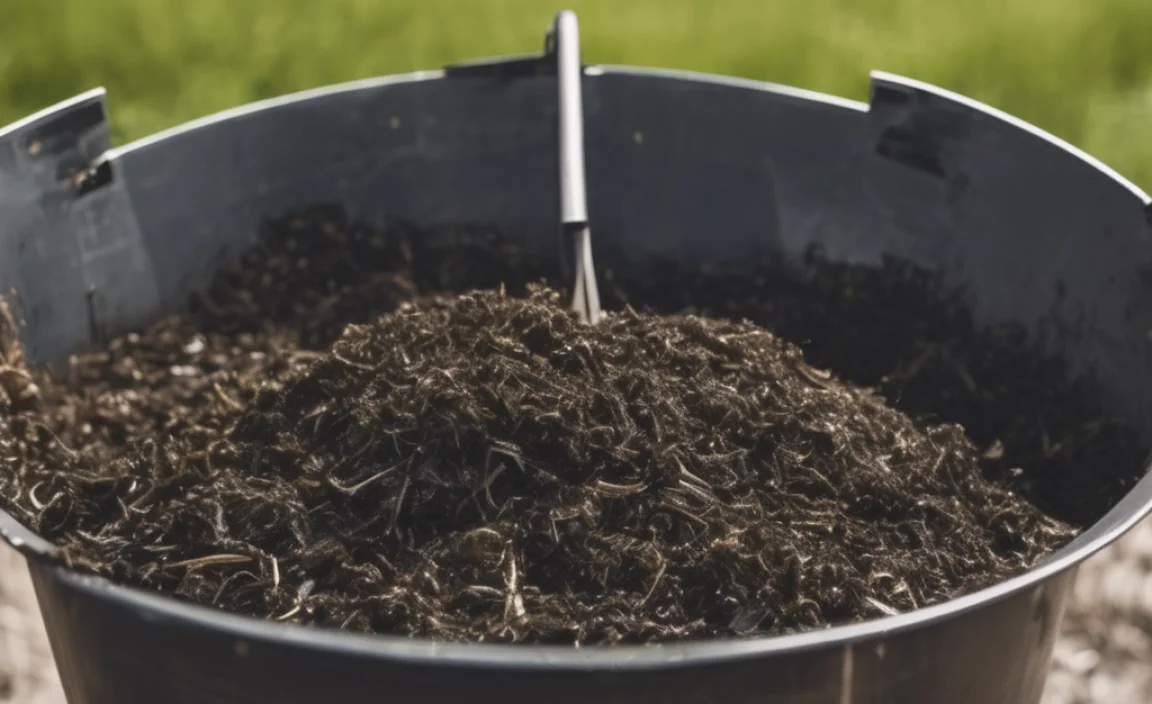
So, why go through the trouble of making compost tea? It boils down to giving your plants and soil a serious upgrade. Here’s the lowdown:
- Boosts Soil Health: Compost tea is loaded with beneficial microorganisms – bacteria, fungi, protozoa, and nematodes. These tiny workers improve soil structure, helping with water retention and aeration. Think of them as the clean-up crew and nutrient delivery service for your soil.
- Enhances Plant Growth: The nutrients and beneficial microbes in compost tea are readily available to plants. This can lead to stronger root systems, lusher foliage, and more abundant blooms and fruits.
- Disease Suppression: A healthy population of beneficial microbes in compost tea can help outcompete or even directly attack plant pathogens. This means your plants are better equipped to fend off common diseases, often reducing the need for chemical treatments.
- Improved Nutrient Uptake: The microbes help break down organic matter and minerals in the soil, making nutrients more accessible for your plants to absorb.
- Sustainable and Organic: It’s a natural way to fertilize and protect your plants, fitting perfectly into organic gardening and sustainable farming practices.
- Cost-Effective: If you’re already composting, using your finished compost to make tea is a budget-friendly way to provide potent nourishment for your plants.
Steeping vs. Aerating: Two Main Ways to Make Compost Tea
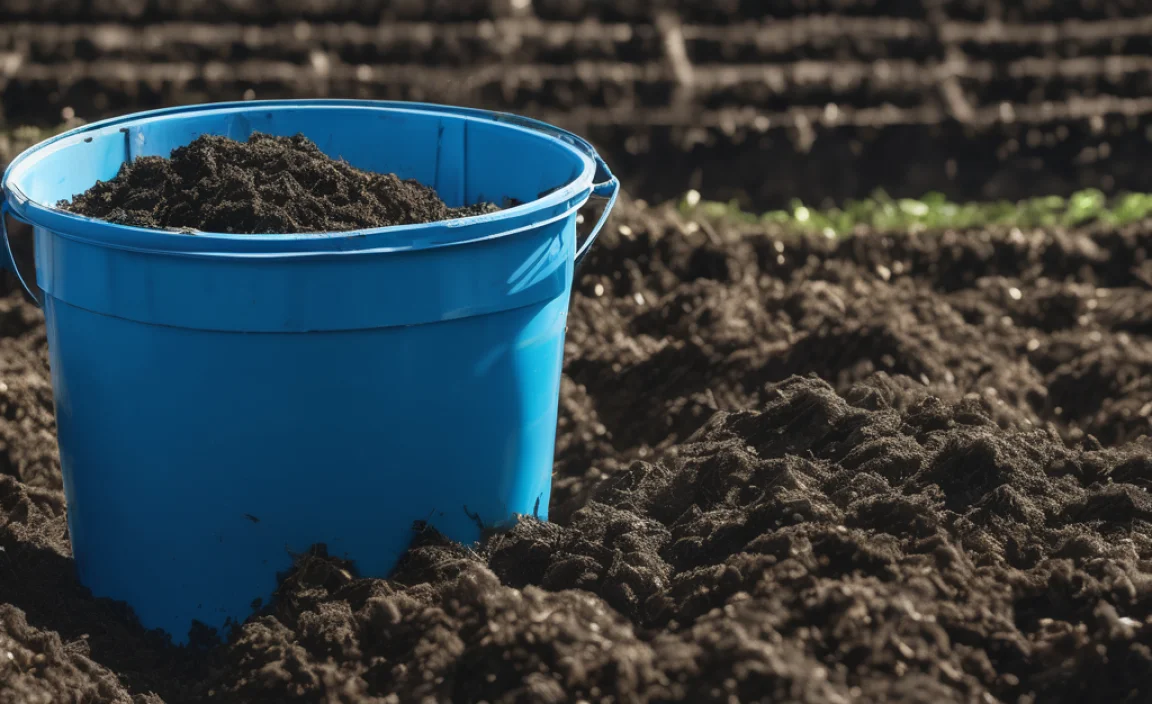
There are two primary methods for brewing compost tea: the “passive” or “steeping” method, and the “active” or “aerated” method. The main difference is how much you introduce oxygen into the brew.
Method 1: The Simple Steeping Method (Passive)
This is the easiest way to get started. It requires minimal equipment and is perfect for beginners or those who don’t want to invest in special gear.
What You’ll Need:
- Finished Compost (preferably worm castings)
- Water (non-chlorinated)
- A sturdy bag (like a cheesecloth, old pillowcase, or burlap bag)
- A bucket or large container
Steps for Simple Steeping:
- Fill the Bag: Place about 1-2 cups of your best compost into the bag.
- Submerge the Bag: Put the bag into your bucket or container. Fill the container with about 5 gallons of water. Make sure the water is non-chlorinated. If you use tap water, let it sit out for 24 hours so the chlorine can evaporate. Chlorine can kill the beneficial microbes you’re trying to extract.
- Steep and Agitate: Let the bag steep in the water. Every day or so, give the bag a good squeeze and stir the water to help release more goodness from the compost.
- Brew Time: Let it steep for about 5 to 7 days. The water will turn a tea-like color.
- Strain and Use: Remove the bag (you can add the spent compost back to your compost bin). You can strain the liquid again if needed to remove any solids.
- Apply: Dilute the tea with more non-chlorinated water until it’s the color of weak tea. Apply to your plants using a watering can or sprayer.
Method 2: The Aerated Compost Tea Method (Active)
This method, often called ACT (Aerated Compost Tea), is considered more potent because it actively introduces oxygen. Oxygen is crucial for developing a wide range of beneficial aerobic microbes, which are the most beneficial for plant and soil health. Aerobic means “breathing oxygen.”
What You’ll Need:
- Finished Compost (worm castings are best)
- Non-chlorinated Water
- A Large Bucket (5-7 gallons)
- An Aquarium Air Pump (strong enough for the bucket size)
- Air Stones (usually 2-3 for a 5-gallon bucket)
- Tubing to connect the pump to the stones
- Optional: Molasses or a bit of liquid kelp (food for the microbes)
- A bag for the compost (same as above)
Steps for Aerated Compost Tea:
- Set Up the Bubbler: Place the air stones at the bottom of the bucket. Connect them to the air pump with the tubing. Make sure the pump is outside the bucket and ideally higher than the water level to prevent back-siphoning if power fails.
- Add Water: Fill the bucket with 5 gallons of non-chlorinated water. Let it sit out to dechlorinate, or use rainwater.
- Turn on the Air: Plug in the air pump. You want to see vigorous bubbling. This oxygenates the water.
- Add Compost: Place about 1-2 cups of high-quality compost (worm castings are excellent) into your bag and tie it securely.
- Submerge and Brew: Submerge the compost bag in the bubbling water. If using, add a tablespoon or two of unsulfured molasses or liquid kelp to feed the microbes (optional, but recommended for a more robust brew).
- Brew Time: Let the mixture brew for 24 to 48 hours. The water should become frothy and smell pleasant and earthy. If it develops a foul smell, something went wrong – you likely didn’t have enough oxygen or used contaminated compost. Discard it and start over.
- Stop Aeration and Strain: Turn off the air pump. Remove the compost bag (again, the spent compost can go back to your bin). You may want to strain the tea to ensure no large particles clog your sprayer.
- Dilute and Apply: Dilute the compost tea with non-chlorinated water until it’s the color of weak tea. Use it within a few hours for maximum microbial benefit.
What to Look for in Your Brew

A good compost tea should have a pleasant, earthy smell. It might be a bit frothy, especially with the aerated method. If it smells rotten, sour, or like ammonia, it’s gone bad. This usually happens if there wasn’t enough oxygen or if the compost wasn’t mature/clean enough. Don’t use bad-smelling tea; it can do more harm than good.
Compost Tea Application: How and When
Now that you’ve brewed your tea, how do you get it onto your plants? Application is key to reaping the benefits. You can apply compost tea in two main ways:
- Drenching the Soil: Pour diluted compost tea directly onto the soil around the base of your plants. This is especially good for feeding the soil microbes and improving root health.
- Foliar Feeding: Spray the diluted tea onto the leaves of your plants. This method provides nutrients directly to the foliage and can offer some protection against leaf-borne diseases. This works best with the aerated method as it generally has fewer solids to clog sprayers.
When to Apply:
- General Application: Apply compost tea every 2-4 weeks during the growing season.
- For Sick Plants: If a plant is showing signs of stress or disease, you can apply compost tea more frequently (e.g., once a week) to help it recover. Soil drench early in the morning or late in the evening is often best.
- Before Planting: Watering your soil with compost tea before planting can give your new seedlings a healthy start.
Dilution is Important: Always dilute your compost tea. A good rule of thumb is a 1:5 or 1:10 ratio of tea to water. For weak tea, think about the color of a light Lipton tea bag. Too strong a concentration can overwhelm plants or soil.
Compost Tea for Different Rural Needs
Living in a rural area often means larger gardens, orchards, or even small-scale farming. Compost tea can be scaled up or adapted to these uses:
For Gardens
This is where compost tea shines for many home gardeners. Use it on vegetable beds, flower gardens, and herb patches. A simple steeping method is often sufficient for smaller gardens. For larger vegetable plots, the aerated method might provide a more robust boost.
For Lawns and Turf
Got a big yard? Compost tea can improve soil health and turf density, making your lawn greener and more resilient. You can apply it using a hose-end sprayer or a boom sprayer if you have larger areas to cover. Aim to apply when grass is actively growing.
For Orchards and Fruit Trees
Trees, especially young ones, benefit greatly from compost tea. Drenching the soil around the base of fruit trees can improve root structure, nutrient uptake, and overall tree vigor. This can translate to better fruit production and health. For larger orchards, you might consider a more substantial brewing setup.
For Small-Scale Farming
If you’re growing for a local market or just have extensive crops, compost tea can be a valuable organic input. Scaling up brewing might involve larger barrels and more powerful air pumps. Researching specific formulations for crops like berries, grapes, or even field corn can yield impressive results. The Compost Research Group provides valuable insights into ACT. For official guidance on soil health, the USDA NRCS Soil Health Division offers extensive resources.
Troubleshooting Common Compost Tea Issues
Even with the best intentions, you might run into a few snags. Here are some common issues and how to fix them:
| Problem | Possible Cause | Solution |
|---|---|---|
| Bad Smell (Rotten Eggs/Ammonia) | Lack of Oxygen, Too much compost, Not enough water, or contaminated ingredients. | Ensure strong aeration. Use less compost. Discard and start over with clean ingredients and proper airflow. |
| Tea is Too Thick/Chunky | Too much compost, or compost not finely broken down. | Use less compost. Filter out larger solids before application, especially for sprayers. |
| No Visible Microbes (under microscope) | Brew time too short, poor quality compost, or incorrect brewing method. | Increase brew time (24-48 hrs for aerated). Use high-quality, fresh compost or worm castings. Ensure consistent aeration. |
| Plants Yellowing After Application | Tea was too concentrated, or applied during extreme heat/drought. | Dilute tea further. Apply during cooler parts of the day or when rain is expected. |
Compost Tea Ingredients: A Deeper Look
While good compost is the base, a few additions can really supercharge your brew. Here’s where the “food” for your microbes comes in:
- Unsulfured Molasses: A favorite for good reason! It provides simple sugars that brew up a whole lot of beneficial bacteria. Just a tablespoon or two per 5 gallons is enough. Make sure it’s unsulfured because sulfur can inhibit microbial life
- Liquid Kelp/Seaweed Extract: Packed with micronutrients and growth hormones, kelp also provides food for microbes and directly benefits plants.
- Fish Hydrolysate: Another nutrient-rich addition that feeds microbes and provides nitrogen for plants.
What to avoid: Never use compost that contains pesticides, herbicides, or synthetic fertilizers. Also, avoid any material that looks moldy or diseased. The goal is to cultivate beneficial life, not spread problems.
Quick Summary: Brewing Your First Batch
Here’s a quick recap to get you started:
- Get Good Compost: Use mature compost or worm castings.
- Use Non-Chlorinated Water: Let tap water sit out for 24 hours or use rainwater.
- Choose Your Method: Simple steeping for ease, or aerated brewing for potency.
- Brew Time: 5-7 days for steeping, 24-48 hours for aerated.
- Dilute: Mix tea with water until it’s the color of weak tea.
- Apply: Drench soil or foliar spray during the growing season.
Remember to always smell your tea! If it’s pleasant and earthy, you’re good to go. If it stinks, pitch it and try again.
Frequently Asked Questions About Compost Tea
Q1: How often can I use compost tea?
A1: Generally, you can apply compost tea every 2-4 weeks during the growing season. You can increase the frequency to once a week for plants that need a boost or are recovering from stress.
Q2: Do I need to buy special equipment?
A2: For the simple steeping method, no! A bucket and a bag are all you need. For the aerated method, an aquarium pump, air stones, and tubing are necessary, but they are relatively inexpensive and reusable.
Q3: Can compost tea hurt my plants?
A3: If used improperly, it’s possible. Always dilute the tea to the color of weak tea, and avoid applying during extreme heat or drought. A bad-smelling brew can also be harmful, so if it smells off, don’t use it.
Q4: What’s the difference between compost tea and worm casting tea?
A4: Worm casting tea is a type of compost tea! Worm castings are a highly concentrated form of compost, so tea made from them is often richer in beneficial microbes and nutrients.
Q5: Can I make compost tea in the winter?
A5: Yes, you can! However, if you’re brewing the aerated method outdoors, ambient temperatures below 50°F (10&

I am passionate about home engineering. I specialize in designing, installing, and maintaining heating, ventilation, and air conditioning systems. My goal is to help people stay comfortable in their homes all year long.


